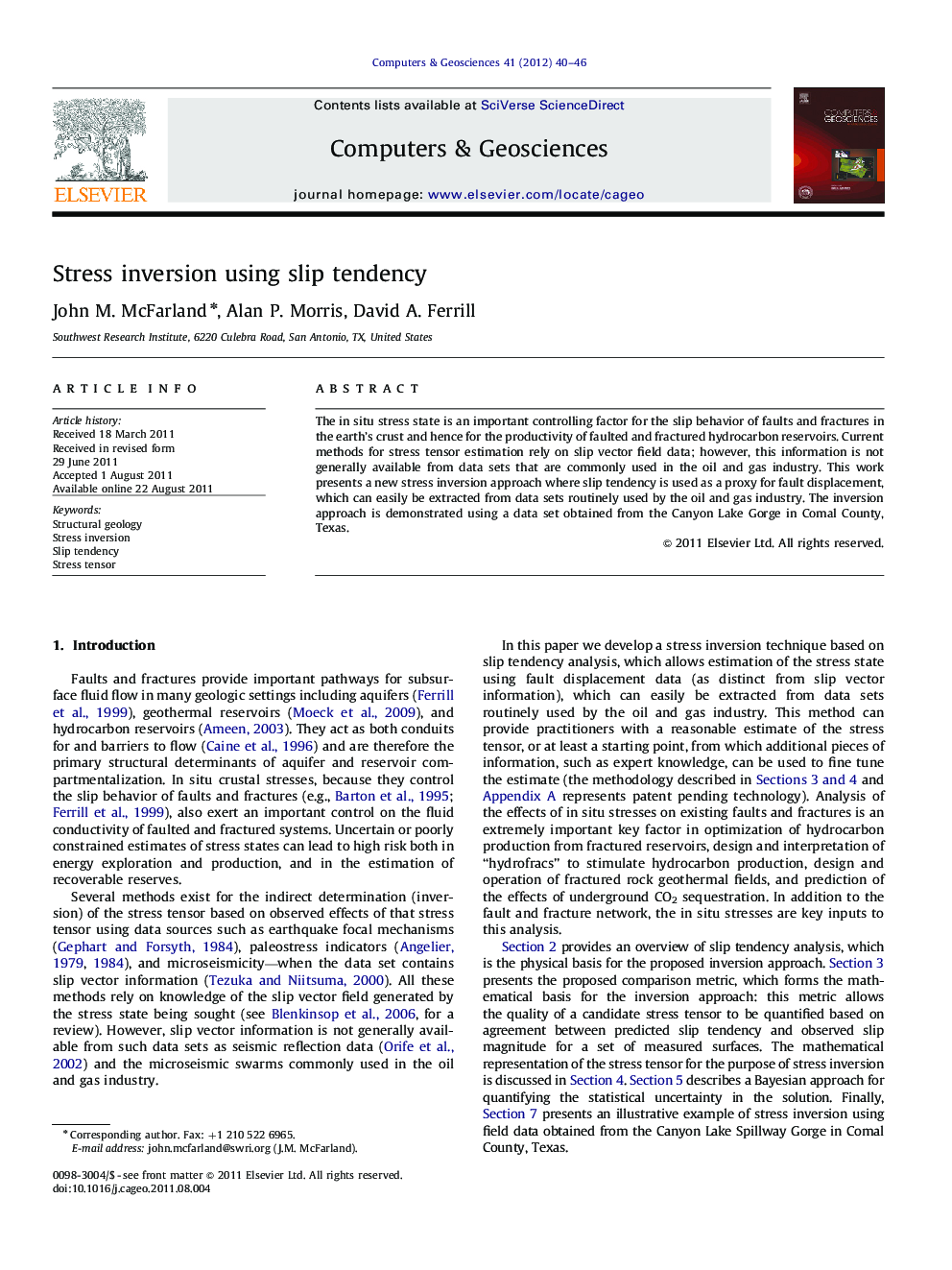| Article ID | Journal | Published Year | Pages | File Type |
|---|---|---|---|---|
| 508037 | Computers & Geosciences | 2012 | 7 Pages |
The in situ stress state is an important controlling factor for the slip behavior of faults and fractures in the earth's crust and hence for the productivity of faulted and fractured hydrocarbon reservoirs. Current methods for stress tensor estimation rely on slip vector field data; however, this information is not generally available from data sets that are commonly used in the oil and gas industry. This work presents a new stress inversion approach where slip tendency is used as a proxy for fault displacement, which can easily be extracted from data sets routinely used by the oil and gas industry. The inversion approach is demonstrated using a data set obtained from the Canyon Lake Gorge in Comal County, Texas.
► We present a novel approach for stress inversion that makes use of slip tendency analysis. ► The approach enables stress inversion using only fault displacement data, so slip vector data are not needed. ► We demonstrate successful results using data from well-exposed normal faults. ► One practical application of the new method is that in some circumstances stress systems can be evaluated prior to drilling wells.
